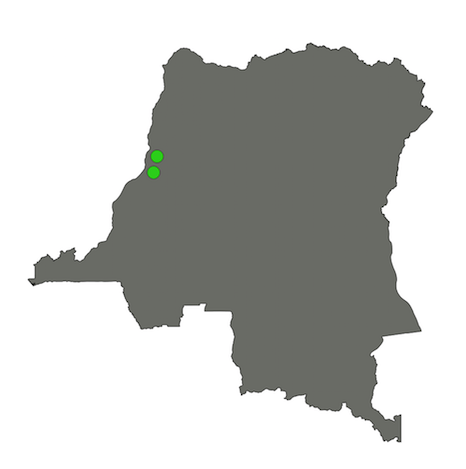Build Effective Social and Behavior Change Strategies


At first glance, the parallels between the 2014 Ebola outbreak in Guinea and the current outbreak in DRC are striking. In both occurrences, the disease originated in a rural village close to a border and quickly spread to nearby urban areas of over 1 million residents. To examine just how similar the two outbreak areas are, we dove into the data.
To understand the population and community differences, we looked at a variety of indicators in Guinea and DRC prior to their respective Ebola outbreaks. Observation of pre-outbreak characteristics allows a clearer comparison of factors that could affect health and government organizations’ ability to intervene. Specifically, Fraym analyzed healthcare access, media consumption, and public services provision.
Healthcare Access
Child health indicators and the presence of other health items serve as a proxy for access to health services and care. In particular, DPT vaccination illustrates the accessibility of healthcare service providers and ability to safely transport heat-sensitive medical supplies. This cold chain is essential in DRC as an Ebola vaccine is deployed, requiring a temperature of -60 to -80°C while in transport.
– Compared to roughly 50% vaccination rate in Conakry before the outbreak, Mbandaka’s rate is close to 75%. This indicates better access to healthcare facilities and a reliable cold chain for safe vaccine transport. Rural Bikoro’s vaccination rate of 40% compares to approximately 80% coverage in Meliandou, indicating difficulty for the safe transport of a heat sensitive vaccine in rural areas near Bikoro.
– Household bed net ownership rates in Mbandaka approach 85%, which is greater than Conakry’s rate of approximately 45%, indicating improved access to fundamental health resources in urban areas. In rural areas, Bikoro has a lower ownership rate near 45% falls behind Meliandou’s rate of approximately 75%, further suggesting that access to health resources may be more limited near DRC’s initial outbreak site.
Public Services
It is important to consider provision of public services when analyzing local capability to combat an Ebola outbreak. Indicators such as access to a toilet or electricity can indicate the extent of the public utilities infrastructure. Understanding this is helpful when determining challenges that organizations arriving to support the Ebola response face.
– Access to electricity is comparable in Bikoro and Meliandou at around 1%, but the disparity between the two countries changes drastically in the effected urban areas. Rates in Mbandaka are around 10%, whereas rates in Conakry are approximately 90%. Differences such as this may affect the ability of response teams to store vaccines and provide consistent lighting and power to response facilities in Mbandaka?.
In Mbandaka and Conakry, approximately 5% of the population does not have access to safe drinking water. In Bikoro and Meliandou, access to safe drinking water is comparable near 40%. In effected rural areas, this could create challenges for response teams as they look to establish treatment centers.
Media Consumption
A robust public awareness campaign is an essential component of response to Ebola. When considering the most effective strategy for propagating information about the crisis, understanding a population’s literacy and ability to access electronic means of communication is crucial. The DRC’s history of effective public awareness campaigns has drastically improved their ability to quickly identify and contain Ebola outbreaks.
– Female literacy is much higher in DRC (aggregate 35%, urban almost 40%) which may have a positive impact on public awareness. Although this is an improvement, aggregate female literacy trails male literacy by 15% — a disparity that could have negative consequences for public health.
– Mobile phone ownership is much higher in Guinea (urban: 96% vs Mbandaka 80%; rural: Bikoro 34% vs Meliandou 47%) – most awareness in Guinea was driven via SMS alerts – this solution may not be as viable due to lower household mobile phone ownership, but still likely to be effective.